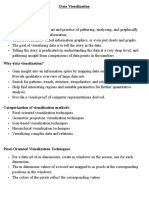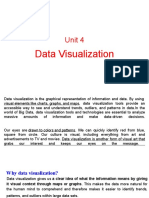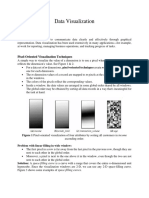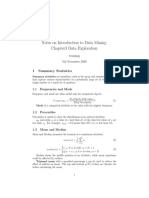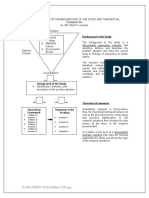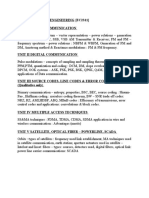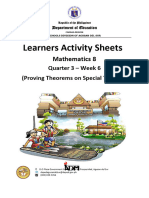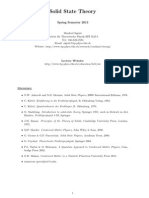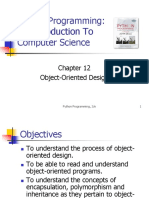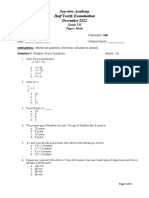0% found this document useful (0 votes)
32 views33 pagesL5 Data Visualization
The document discusses various statistical and visualization techniques for understanding data, including boxplots, histograms, quantile plots, scatter plots, and more. Graphical displays are useful for gaining insights from data and finding patterns, relationships, and outliers.
Uploaded by
vishnu karthikCopyright
© © All Rights Reserved
We take content rights seriously. If you suspect this is your content, claim it here.
Available Formats
Download as PPT, PDF, TXT or read online on Scribd
0% found this document useful (0 votes)
32 views33 pagesL5 Data Visualization
The document discusses various statistical and visualization techniques for understanding data, including boxplots, histograms, quantile plots, scatter plots, and more. Graphical displays are useful for gaining insights from data and finding patterns, relationships, and outliers.
Uploaded by
vishnu karthikCopyright
© © All Rights Reserved
We take content rights seriously. If you suspect this is your content, claim it here.
Available Formats
Download as PPT, PDF, TXT or read online on Scribd
/ 33




